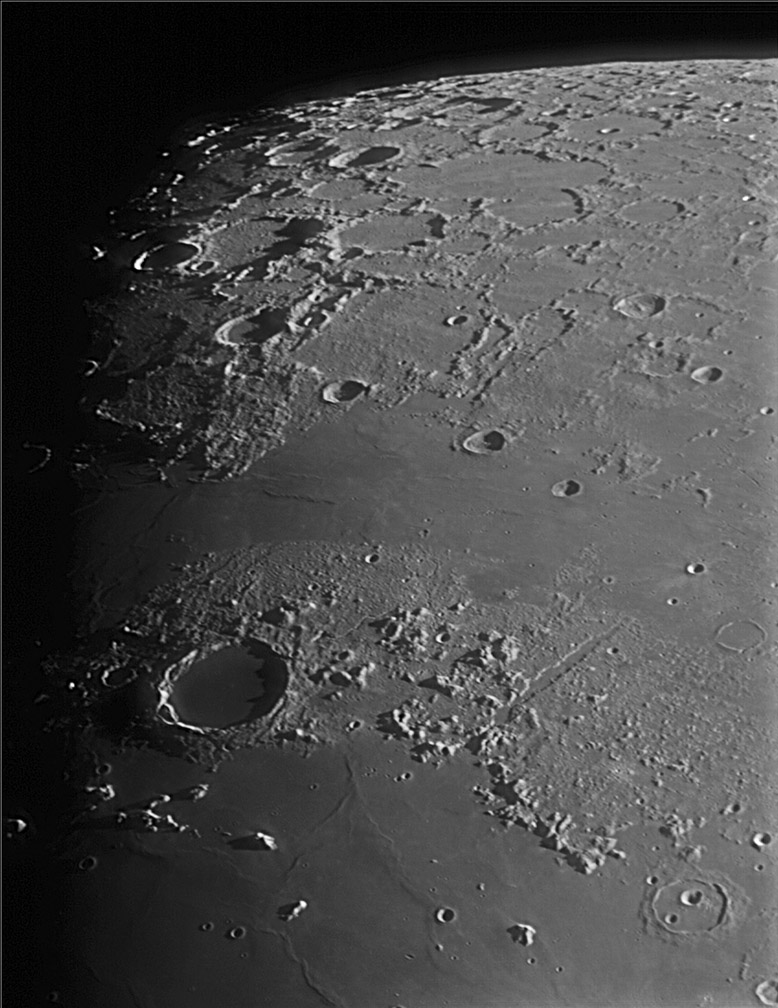April 21, 2018
Faultless Image
Originally published December 13, 2008

image by Boothee Thaik Htun, Yangon (former Rangoon), Myanmar (former Burma)
Is this the best image of the Moon ever taken in Myanmar? It may be, for Boothee comments that no one else is imaging the Moon from Yangon. This is quite a respectable image no matter where the photons were collected. It covers a large interesting area with sharpness and good tonal quality. And it has the most important - from my point of view - quality of an image: it makes me see things I haven't noticed before. In particular, the abrupt boundary of the Imbrium ejecta north of Plato suggest a substantial down-dropping of the Frigoris side. A similar sharp and straight boundary occurs on the opposite side of Frigoris, running towards Timaeus. Could both of these edges mark faults, where the original surface has subsided down out of sight, being covered by later mare lavas? The mare must be deep enough to completely cover craters that may have existed on the original surface since no ghost craters are seen. Also, would the east side of the Alpine Valley look like one of these edges if the area to the west subsided and was inundated by lavas? We don't know these reality of these speculative interpretations, and Frigoris is the most unusual mare on the Moon, but Boothee's image will cause we to look at other views of this area with a possible interpretation in mind, looking for evidence pro or con.
Chuck Wood
Technical Details
2008-10-08, 14:57 GMT. 1150 mm fl, 254 mm, Newtonian Reflector on EQ5 with DK3 drives + QHY5 Colour Planetary Imager / Guider; Registax 4 (stack size 250) + CS3.
Related Links
Rükl plate 4
Yesterday's LPOD: New Domes?
Tomorrow's LPOD: Radial Fractures?
COMMENTS?
Register, Log in, and join in the comments.



